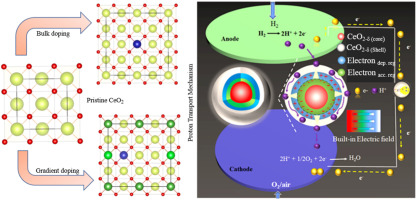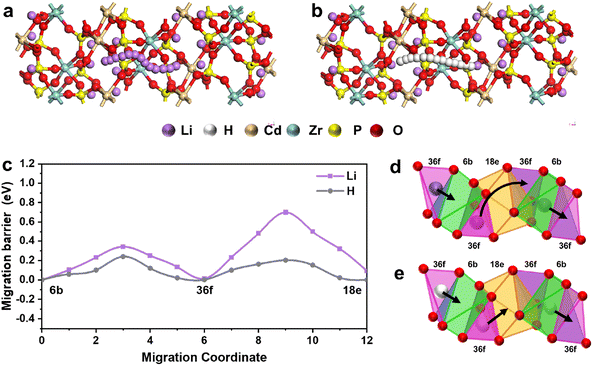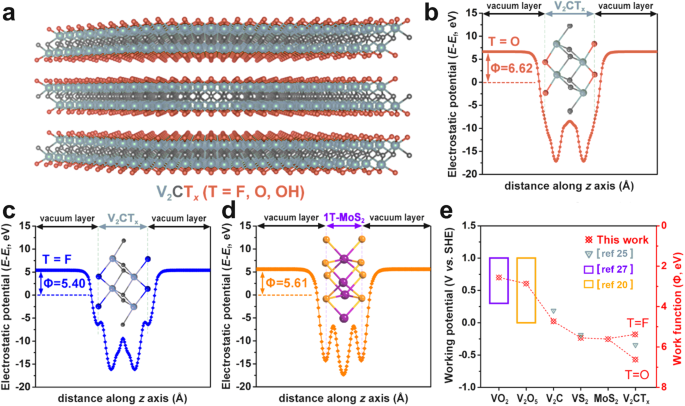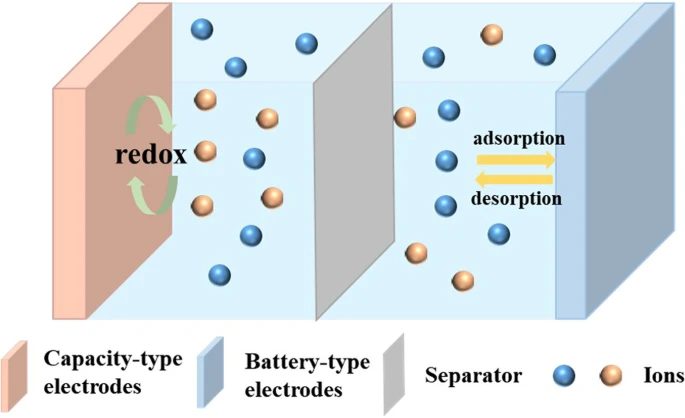
Proton transport controlled at surface layer of CeO2 by gradient-doping with a built-in-field effect
Abstract: Ceramic fuel cells hold an important position for the sustainable energy future using renewable energy sources with high efficiency. The design and synthesis of active materials, interface engineering and having capability of low operating temperature is considered as an important factor to further increase the power output and stability of ceramic fuel cell devices. A novel methodology has vital importance to develop new functionalities of existing materials by introducing new different effects. The built-in electric field (BIEF) is one of the most recently used approaches to improve charge transfer and ionic conductivity of solid oxide materials. Herein, we demonstrate gradient doping strategy in CeO2–δ structure to produce BIEF effect and to modulate the proton transport effectively at the surface layer rather than bulk structure. The inclusions of La and Sr metal ions at the surface and Co-metal ions into bulk-layer of CeO2 form the gradiently doped structure. The gradient doping into CeO2 highly improves the proton transport properties through the surface layer by modifying the energy levels. Moreover, unbalanced charge distribution due to gradient doping produces built-in electric-field to provide extra driving force for protons transport through surface layer. The acquired gradiently doped fluorite structure exhibits remarkable proton conductivity of >0.2 S/cm, as a result ceramic fuel cell shows power output of >1000 mW/cm2 while operating at 500 °C. This unique work highlights the critical role of gradiently doped electrolyte in electrochemical conversion energy devices and offers new understanding and practices for sustainable energy future.

Proton conductor NASICON-structure Li1+xCdx/2Zr2−x/2(PO4)3 as solid electrolyte for intermediate-temperature fuel cells
Abstract: Low ionic conductivity of solid electrolytes at intermediate temperatures hinders the commercialization process of solid fuel cell technology. A sodium superionic conductor (NASICON)-structure with a rigid three-dimensional network and an interconnected interstitial space is expected to be an ideal solid electrolyte for fuel cells. Based on the H+/Li+ exchange engineering strategy, here we report a NASICON-structure proton conductor Li1+xCdx/2Zr2−x/2(PO4)3 (x = 0.5, 1, 1.5, 2) derived from CdZr4(PO4)6 to construct a fuel cell device. Among all samples, the Li3Cd1Zr1(PO4)3 cell device exhibits a high performance including peak power density 815 mW cm−2, proton conductivity 0.165 S cm−1 and activation energy 0.372 eV at 550 °C. Theoretical and experimental studies both suggest that the high proton conductivity benefits from the unique 3D interstitial space and rapid H+/Li+ exchange in the NASICON material. Under fuel cell operating conditions, the interstitial space of Li1+xCdx/2Zr2−x/2(PO4)3 (x = 2) substitutes mobile Li+ with H+ enabling fast proton transport. The new transport mechanism and excellent proton conductivity suggest that Li1+xCdx/2Zr2−x/2(PO4)3 provides new opportunities for enriching novel electrolyte materials in intermediate temperature protonic ceramic fuel cells (IT-PCFCs).

An acetate electrolyte for enhanced pseudocapacitve capacity in aqueous ammonium ion batteries
Abstract:
Ammonium ion batteries are promising for energy storage with the merits of low cost, inherent security, environmental friendliness, and excellent electrochemical properties. Unfortunately, the lack of anode materials restricts their development. Herein, we utilized density functional theory calculations to explore the V2CTx MXene as a promising anode with a low working potential. V2CTx MXene demonstrates pseudocapacitive behavior for ammonium ion storage, delivering a high specific capacity of 115.9 mAh g−1 at 1 A g−1 and excellent capacity retention of 100% after 5000 cycles at 5 A g−1. In-situ electrochemical quartz crystal microbalance measurement verifies a two-step electrochemical process of this unique pseudocapacitive storage behavior in the ammonium acetate electrolyte. Theoretical simulation reveals reversible electron transfer reactions with [NH4+(HAc)3]···O coordination bonds, resulting in a superior ammonium ion storage capacity. The generality of this acetate ion enhancement effect is also confirmed in the MoS2-based ammonium-ion battery system. These findings open a new door to realizing high capacity on ammonium ion storage through acetate ion enhancement, breaking the capacity limitations of both Faradaic and non-Faradaic energy storage.

Recent advances in functional materials and devices for Zn-Ion hybrid supercapacitors
Abstract:
Zinc-ion hybrid supercapacitors (ZHSCs) are attracting significant attention due to their high energies/power densities, safety, and low cost. In this review, recent advances in the development of ZHSCs are summarized. Particular emphasis is placed on state-of-the-art cathodes (including carbon, metal oxides, MXenes, and redox-active polymers), anodes (including Zn-based composites and Zn-free materials) and electrolytes for ZHSCs. Furthermore, the latest research on functional ZHSC devices with miniaturized ZHSCs, fiber-shaped ZHSCs, self-chargeable ZHSCs and self-healing devices is reported. Finally, further developments with ZHSCs are envisaged for future research in this thriving field.
- 1
热门文章
Proton transport controlled at surface layer of CeO2 by gradient-doping with a built-in-field effect
Proton conductor NASICON-structure Li1+xCdx/2Zr2−x/2(PO4)3 as solid electrolyte for intermediate-temperature fuel cells
An acetate electrolyte for enhanced pseudocapacitve capacity in aqueous ammonium ion batteries
Recent advances in functional materials and devices for Zn-Ion hybrid supercapacitors


